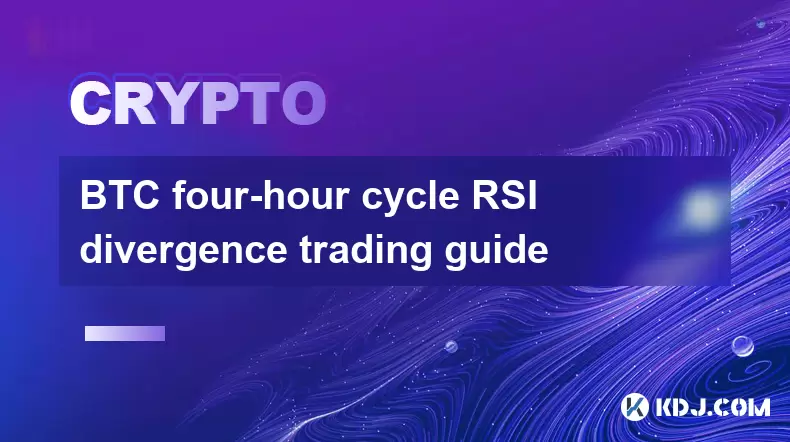-
 Bitcoin
Bitcoin $116900
0.00% -
 Ethereum
Ethereum $4280
5.48% -
 XRP
XRP $3.265
-1.45% -
 Tether USDt
Tether USDt $1.000
-0.01% -
 BNB
BNB $807.0
1.41% -
 Solana
Solana $183.1
2.93% -
 USDC
USDC $0.9999
0.00% -
 Dogecoin
Dogecoin $0.2440
6.50% -
 TRON
TRON $0.3357
-0.88% -
 Cardano
Cardano $0.8178
2.63% -
 Hyperliquid
Hyperliquid $44.13
7.45% -
 Chainlink
Chainlink $21.39
9.09% -
 Stellar
Stellar $0.4524
-0.84% -
 Sui
Sui $3.957
2.13% -
 Bitcoin Cash
Bitcoin Cash $572.7
-2.54% -
 Hedera
Hedera $0.2671
1.54% -
 Avalanche
Avalanche $24.77
4.17% -
 Ethena USDe
Ethena USDe $1.001
0.02% -
 Litecoin
Litecoin $122.3
-1.94% -
 Toncoin
Toncoin $3.432
2.26% -
 UNUS SED LEO
UNUS SED LEO $9.007
0.49% -
 Shiba Inu
Shiba Inu $0.00001396
5.26% -
 Uniswap
Uniswap $11.09
1.64% -
 Polkadot
Polkadot $4.155
4.57% -
 Dai
Dai $1.000
0.00% -
 Pepe
Pepe $0.00001253
5.11% -
 Cronos
Cronos $0.1588
2.67% -
 Bitget Token
Bitget Token $4.512
0.05% -
 Monero
Monero $275.0
0.64% -
 Ethena
Ethena $0.7527
15.10%
BTC four-hour cycle RSI divergence trading guide
BTC traders use the four-hour cycle RSI divergence to spot trend reversals, entering trades when price and RSI move oppositely, signaling potential shifts in momentum.
Jun 04, 2025 at 11:35 am

Introduction to BTC Four-Hour Cycle RSI Divergence
Trading Bitcoin (BTC) using the four-hour cycle Relative Strength Index (RSI) divergence is a popular strategy among crypto traders. RSI divergence occurs when the price of an asset moves in the opposite direction of the RSI indicator. This phenomenon can signal potential trend reversals, making it a crucial tool for traders looking to capitalize on shifts in market momentum. In this guide, we will delve into the intricacies of using RSI divergence on the BTC four-hour chart, providing detailed steps and insights to help you master this trading strategy.
Understanding RSI and Divergence
The Relative Strength Index (RSI) is a momentum oscillator that measures the speed and change of price movements. It is typically set to a 14-period timeframe and oscillates between 0 and 100. A reading above 70 indicates that an asset may be overbought, while a reading below 30 suggests it may be oversold. Divergence happens when the RSI and price action do not confirm each other, which can be a powerful signal for traders.
There are two types of RSI divergence:
- Bullish Divergence: This occurs when the price makes a lower low, but the RSI forms a higher low. It suggests that the downward momentum is weakening, and a potential upward reversal may be imminent.
- Bearish Divergence: This occurs when the price makes a higher high, but the RSI forms a lower high. It indicates that the upward momentum is waning, and a potential downward reversal could be on the horizon.
Identifying RSI Divergence on the BTC Four-Hour Chart
To effectively trade BTC using the four-hour cycle RSI divergence, you must first learn to identify these patterns on the chart. Here’s how to do it:
- Open your trading platform and select the BTC/USD pair.
- Switch to the four-hour timeframe.
- Add the RSI indicator to your chart with a 14-period setting.
- Monitor the price action and RSI movements over multiple four-hour candles.
Look for instances where the price and RSI are moving in opposite directions. For example, if the price of BTC forms a lower low on the four-hour chart but the RSI forms a higher low, you are seeing a bullish divergence. Conversely, if the price forms a higher high but the RSI forms a lower high, you are witnessing a bearish divergence.
Setting Up Your Trade Based on RSI Divergence
Once you have identified an RSI divergence on the BTC four-hour chart, the next step is to set up your trade. Here’s a detailed guide on how to do that:
- Confirm the Divergence: Ensure that the divergence you’ve identified is clear and not a false signal. Look for at least two instances of divergence to increase the reliability of the signal.
- Determine Entry Point: For a bullish divergence, look for a bullish candlestick pattern or a breakout above a key resistance level as a confirmation to enter a long position. For a bearish divergence, look for a bearish candlestick pattern or a breakdown below a key support level as a confirmation to enter a short position.
- Set Stop-Loss: Place your stop-loss order just below the recent swing low for long positions or just above the recent swing high for short positions. This helps to manage risk and protect your capital.
- Set Take-Profit: Identify potential resistance levels for long positions or support levels for short positions. You can set your take-profit order at these levels or use a trailing stop to maximize profits.
Risk Management and Trade Execution
Effective risk management is crucial when trading BTC using RSI divergence. Here are some key points to consider:
- Position Sizing: Never risk more than a small percentage of your trading capital on a single trade. A common rule of thumb is to risk no more than 1-2% of your total capital per trade.
- Trade Execution: When executing your trade, ensure that you follow your trading plan strictly. Avoid emotional decisions and stick to the entry, stop-loss, and take-profit levels you have set.
- Monitoring: Keep an eye on your open trades and be ready to adjust your stop-loss and take-profit orders based on new market developments. However, avoid overtrading or making unnecessary adjustments.
Practical Example of Trading BTC Using Four-Hour Cycle RSI Divergence
Let’s walk through a practical example of how you might trade BTC using the four-hour cycle RSI divergence.
- Identify the Divergence: Suppose you notice that BTC has been making lower lows over the past few four-hour candles, but the RSI is forming higher lows. This indicates a bullish divergence.
- Confirm the Signal: You wait for a bullish candlestick pattern or a breakout above a key resistance level to confirm the divergence. Let’s say you see a bullish engulfing pattern on the next four-hour candle.
- Enter the Trade: You decide to enter a long position on BTC at the close of the bullish engulfing candle.
- Set Stop-Loss: You place your stop-loss order just below the recent swing low, which is at $29,000.
- Set Take-Profit: You identify a resistance level at $32,000 and set your take-profit order at this level.
- Monitor and Adjust: As the trade progresses, you monitor the price action and adjust your stop-loss to lock in profits if necessary. If BTC reaches $31,000, you might move your stop-loss to $30,000 to secure some gains.
Frequently Asked Questions
Q: Can RSI divergence be used on other cryptocurrencies besides BTC?
A: Yes, RSI divergence can be applied to other cryptocurrencies as well. However, the effectiveness of the strategy may vary depending on the liquidity and volatility of the specific crypto asset. Always ensure that you have enough historical data to analyze and confirm divergence signals.
Q: How reliable is RSI divergence as a trading signal?
A: RSI divergence is a powerful tool, but it is not foolproof. It should be used in conjunction with other technical indicators and analysis methods to increase the reliability of your trading signals. False divergences can occur, so it's important to wait for confirmation before entering a trade.
Q: What timeframe should I use for RSI divergence trading other than the four-hour cycle?
A: While the four-hour cycle is popular for RSI divergence trading, you can also use other timeframes such as the daily or hourly charts. The key is to ensure that you have enough data points to identify clear divergence patterns. Shorter timeframes may provide more trading opportunities but can be noisier, while longer timeframes may offer more reliable signals but fewer trading opportunities.
Q: Is it necessary to use a specific RSI setting for divergence trading?
A: The standard setting for RSI is 14 periods, which is widely used for divergence trading. However, some traders experiment with different settings, such as 9 or 21 periods, to suit their trading style. It's important to backtest different settings to see which works best for your strategy and the specific asset you are trading.
Disclaimer:info@kdj.com
The information provided is not trading advice. kdj.com does not assume any responsibility for any investments made based on the information provided in this article. Cryptocurrencies are highly volatile and it is highly recommended that you invest with caution after thorough research!
If you believe that the content used on this website infringes your copyright, please contact us immediately (info@kdj.com) and we will delete it promptly.
- Trump, Nasdaq, and Token Treasury: WLFI's $1.5B Gambit
- 2025-08-10 06:50:12
- Trump, Nasdaq, and Token Treasury: WLFI's $1.5B Play
- 2025-08-10 06:30:11
- Bitcoin's Blazing 2025: YTD Performance and Total Return Breakdown
- 2025-08-10 07:10:12
- Coinbase, DEX Trading, and Base Network: A New Era for Crypto?
- 2025-08-10 06:30:11
- Dogecoin's Bullish Breakout: Riding the Fibonacci Waves to $1?
- 2025-08-10 07:10:12
- Block Inc., Bitcoin, and Mining Chips: Reshaping Digital Finance, New York Style
- 2025-08-10 06:50:12
Related knowledge

What are the key features of Bitcoin?
Aug 10,2025 at 02:50am
Decentralization and Peer-to-Peer NetworkOne of the most defining characteristics of Bitcoin is its decentralized nature. Unlike traditional financial...

Can the Bitcoin protocol be changed?
Aug 07,2025 at 01:16pm
Understanding the Bitcoin ProtocolThe Bitcoin protocol is the foundational set of rules that govern how the Bitcoin network operates. It defines every...

What happens to Bitcoin transactions once they are confirmed?
Aug 09,2025 at 05:22am
Understanding Bitcoin Transaction ConfirmationWhen a Bitcoin transaction is initiated, it is broadcast to the network and placed in a pool of unconfir...

How are Bitcoin transactions verified?
Aug 08,2025 at 06:57am
Understanding Bitcoin Transaction VerificationBitcoin transactions are verified through a decentralized network of nodes and miners that ensure the le...

How does decentralization make Bitcoin secure?
Aug 08,2025 at 09:35am
Understanding Decentralization in BitcoinDecentralization is a foundational principle of Bitcoin's architecture and plays a critical role in its secur...

What are some common misconceptions about Bitcoin?
Aug 07,2025 at 07:22pm
Bitcoin is Just Like Regular MoneyA widespread misconception is that Bitcoin functions identically to traditional fiat currencies like the US dollar o...

What are the key features of Bitcoin?
Aug 10,2025 at 02:50am
Decentralization and Peer-to-Peer NetworkOne of the most defining characteristics of Bitcoin is its decentralized nature. Unlike traditional financial...

Can the Bitcoin protocol be changed?
Aug 07,2025 at 01:16pm
Understanding the Bitcoin ProtocolThe Bitcoin protocol is the foundational set of rules that govern how the Bitcoin network operates. It defines every...

What happens to Bitcoin transactions once they are confirmed?
Aug 09,2025 at 05:22am
Understanding Bitcoin Transaction ConfirmationWhen a Bitcoin transaction is initiated, it is broadcast to the network and placed in a pool of unconfir...

How are Bitcoin transactions verified?
Aug 08,2025 at 06:57am
Understanding Bitcoin Transaction VerificationBitcoin transactions are verified through a decentralized network of nodes and miners that ensure the le...

How does decentralization make Bitcoin secure?
Aug 08,2025 at 09:35am
Understanding Decentralization in BitcoinDecentralization is a foundational principle of Bitcoin's architecture and plays a critical role in its secur...

What are some common misconceptions about Bitcoin?
Aug 07,2025 at 07:22pm
Bitcoin is Just Like Regular MoneyA widespread misconception is that Bitcoin functions identically to traditional fiat currencies like the US dollar o...
See all articles

























































































